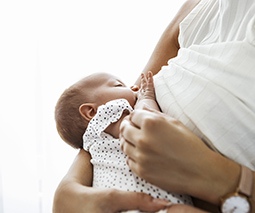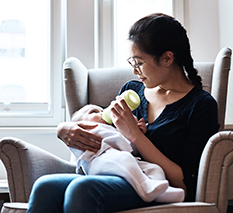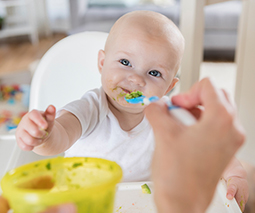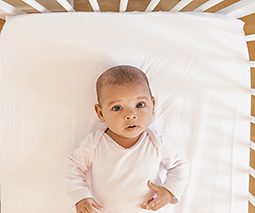How to establish good breastfeeding positions for you and your baby

For most new mums, learning how to breastfeed is a process of trial and error. You may have an image in your mind of just popping your baby on the breast and they’re good to go, or you may have heard horror stories about cracked nipples and engorged breasts and be concerned that breastfeeding is a disaster waiting to happen. In reality, all mums have their own individual experience, but there are definitely some concrete skills you can learn to breastfeed in a way that works for you and your baby.
Know the holds
Lactation consultant and author, Pinky McKay, says that even before your baby’s born, you can learn the different breastfeeding positions. Then when the big day arrives and you have bub in your arms, you’ll be equipped with the knowledge you need.
Take control
Soon after your baby’s birth, a well-meaning midwife at the hospital may prompt you to feed your baby by taking over a bit. Pinky says this can be feel a bit invasive for new mums who have just gone through the birthing process and suggests that if you’re ready and feel prepared, you can take control of the moment and let the midwife know you’d like to attempt breastfeeding yourself. “Try and do it yourself and trust your baby to get there,” she advises.
Seek out help when needed
“Of course, if it’s hurting, you do need to ask for help and get someone to observe a feed,” says Pinky. “If they say it looks all right and it’s still hurting, they need to look inside the baby’s mouth and check their oral function and check for tongue ties.”

Breastfeeding 101
When positioning your baby at your breast, make sure your baby’s whole body is facing your chest. She shouldn’t be turning her head to feed, so check that her ear, shoulder and hip are in a straight line facing you. Using a generously-sized breastfeeding pillow like the Little Haven Nursing Pillow that’s designed to especially to support your baby while feeding, may make this more comfortable.
3 tried-and-true breastfeeding holds
1. The classic cradle hold
To try out the classic cradle hold, sit upright and hold your baby so her head is at the bend of your elbow. Cup your breast with the other hand with your thumb above the nipple. Press your breast so the nipple points towards your baby’s nose and allow her to latch.
2. The football hold
This hold is great if you have a small baby, large breasts, or are recovering from a caesarean section. Position your baby at your side so she’s facing you with her legs tucked under your arm. You can then support her head with the same hand. Using your other hand, you can cup your breast for feeding.
3. The laid-back position
Lean back in a semi-reclining position and place your baby tummy-to-tummy onto your body with her head near your breast and allow your baby to latch naturally. This position may work well for you when you have a newborn, or if you have small breasts.
Pinky stresses that you may not even need to try all the holds before you find one that allows your baby to get a good attachment at every feed. “If a hold works for you, and you’re comfortable and your baby’s comfortable, you can stick with that hold. We all have different shaped breasts, different sized breasts,” says Pinky. “Just experiment until you find a hold that feels comfortable for you.”
This is a sponsored post by BIG W, where you can find everything you need for pregnancy, baby and beyond.





